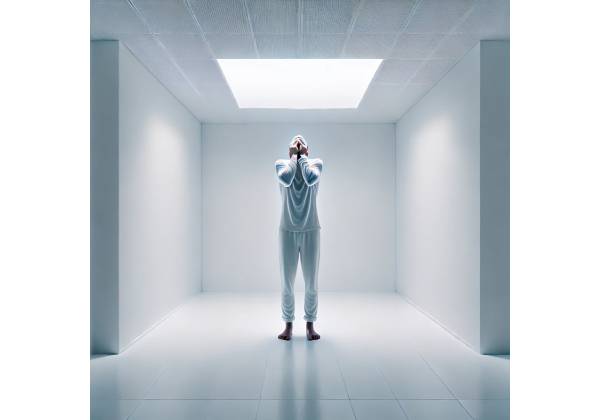
What is leukophobia?
Leukophobia, though less well known, is a genuine and significant fear felt by people who are extremely afraid of the color white. This phobia is classified as chromophobia, or a fear of colors, and it can be triggered by a variety of psychological and emotional factors. Some people experience intense anxiety, panic, or dread when they see or think about the color white. While this fear may appear unusual to many, it can have a significant impact on an individual’s daily life, affecting their emotional well-being and interactions in environments where the color white is prevalent.
People with leukophobia may avoid certain environments, objects, or even experiences that remind them of the color white, posing social and occupational challenges. White is a common color in many aspects of life, from hospitals to everyday objects such as paper or walls, which can make this phobia especially disruptive. Although leukophobia is not as well-known as other specific phobias, it is critical to recognize that it is just as real and debilitating for those who suffer from it.
Common symptoms of leukophobia
Leukophobia, like other specific phobias, manifests as a variety of physical, emotional, and behavioral symptoms that differ in intensity from person to person. Understanding these symptoms is important because they not only highlight the severity of the condition but also aid in determining whether someone is suffering from leukophobia.
Physical Symptoms
When confronted with the color white, people who suffer from leukophobia may exhibit a variety of physical responses. These responses frequently coincide with the body’s fight-or-flight response, which is activated when a person perceives danger:
- Rapid Heart Rate: When exposed to the color white, a person with leukophobia may experience an immediate increase in heart rate, which is often accompanied by a pounding sensation in the chest.
- Shortness of Breath: Difficulty breathing is a common physical response to a phobic episode. This could be due to hyperventilation, in which the person takes shallow, rapid breaths in response to fear.
- Sweating: Anxiety often causes sudden and profuse sweating, particularly on the palms, face, or underarms.
- Shaking or Trembling: The individual may experience involuntary shaking of the hands, legs, or entire body, especially during times of acute distress.
- Dizziness or Lightheadedness: Excessive fear can cause dizziness, resulting in a loss of balance or fainting.
Emotional Symptoms
Leukophobia can have a significant impact on a person’s emotional state, both during and after exposure to the color white.
- Panic and Terror: When confronted with white objects or environments, intense fear often arises, which can escalate into a full-blown panic attack. The individual may experience an overwhelming sense of doom or danger.
- Irrational Fear: Despite knowing logically that white is not harmful, people with leukophobia are unable to control their emotional reaction, which is usually disproportionate to the actual threat posed by the color.
- Persistent Anxiety: The anticipation of seeing the color white can cause ongoing anxiety, keeping the individual on edge even when they are not directly exposed to the feared color.
- Feelings of Helplessness: Many people with leukophobia experience a loss of control during an episode, unable to manage or prevent their fear response. This sense of helplessness may exacerbate their emotional distress.
- Depression: Over time, the chronic avoidance and fear associated with leukophobia can lead to feelings of hopelessness and depression, particularly if the phobia significantly interferes with daily life.
Behavioral Symptoms
Leukophobia also affects behavior, frequently leading to avoidance or disruption of normal activities:
- Avoidance: One of the most common leukophobia-related behaviors is avoidance. This can include avoiding environments where the color white is prevalent, such as hospitals, grocery stores, or certain public spaces.
- Ritualistic Behaviors: Some people may develop rituals or routines to cope with their anxiety about seeing the color white. For example, they may insist on using colored objects or clothing and may even rearrange their living space to reduce the amount of white items.
- Social Withdrawal: The pervasive anxiety associated with leukophobia may cause people to avoid social situations where white is unavoidable, resulting in isolation and difficulty maintaining relationships.
- Difficulty Concentrating: During an episode or when anticipating exposure to white, the individual may struggle to focus on anything else, which may interfere with work, study, or daily tasks.
- Panic Attacks: In severe cases, leukophobia can cause full-fledged panic attacks characterized by overwhelming fear, a sense of loss of control, and a range of physical symptoms such as chest pain, difficulty breathing, and fainting.
While not everyone with leukophobia experiences all of these symptoms, the condition can have a significant impact on daily life, relationships, and emotional health. Understanding these symptoms is the first step toward getting help and support.
What causes leukophobia?Exploring the Origins and Risk Factors.
Leukophobia, like many other specific phobias, has multiple causes. Understanding the source of this fear can help individuals and mental health professionals deal with it more effectively. The following are some important factors that may contribute to the development of leukophobia.
Past Traumatic Experiences
One of the most common causes of specific phobias, such as leukophobia, is a traumatic experience with the feared object or situation. For example, someone may have experienced a distressing event in a predominantly white setting, such as a hospital or clinic, resulting in a long-term fear of the color white. The brain may begin to associate the color with danger or pain, resulting in a phobic response when exposed to it.
Learned Behaviors
Phobias can also be acquired by observing others. If a child grows up in an environment where a parent or close family member is afraid of certain colors or objects, they may internalize this behavior. Even in the absence of a direct traumatic experience, this learned fear can develop into a full-blown phobia over time.
Genetic Predisposition
There is evidence that some people may be genetically predisposed to developing anxiety disorders and phobias. A family history of anxiety, depression, or other mental health issues may raise the risk of developing leukophobia or other specific phobias.
Cultural and Symbolic Associations
In many cultures, white is associated with purity, but it can also represent death or mourning. For example, in some Eastern cultures, white represents death and mourning, which may lead to individuals developing a fear of the color due to its symbolic associations. Such cultural beliefs can contribute to the development of leukophobia, particularly if they are reinforced by other experiences or family beliefs.
Biological Factors
Neurological and biological factors can also influence the development of phobias. Some people may have increased sensitivity in the brain’s fear circuitry, specifically the amygdala, which processes emotional responses. Even when there is no immediate threat, the color white may be perceived as a trigger for fear by those suffering from leukophobia.
How Leukophobia is Diagnosed
Leukophobia is typically diagnosed through a combination of clinical interviews, assessments, and questionnaires designed to assess the severity of the fear and its impact on the individual’s daily life. The following are the key steps in the diagnostic process.
Clinical Interviews
A mental health professional, such as a psychologist or psychiatrist, will typically conduct a thorough clinical interview to investigate the individual’s fear of the color white. During the interview, the clinician will inquire about the onset of the fear, its triggers, and how it affects the individual’s emotions, thoughts, and behavior. This allows the clinician to determine whether the fear is irrational and disproportionate, as is typical of a phobia.
Symptom Assessment
The mental health professional will evaluate the symptoms of leukophobia, including physical, emotional, and behavioral manifestations. The Fear Survey Schedule (FSS) and other standardized questionnaires can be used to quantify the severity of an individual’s fear and to screen for co-occurring mental health conditions like generalized anxiety disorder or depression.
Differential Diagnosis
It is critical to distinguish leukophobia from other mental health disorders that may present with similar symptoms. For example, some people may fear medical settings (hospital phobia) rather than the color white. Furthermore, a thorough evaluation helps rule out generalized anxiety or obsessive-compulsive disorder, which can sometimes include fears of contamination associated with white objects.
Treating Leukophobia: Therapies and Interventions
Treating leukophobia necessitates a personalized and multifaceted approach. While there are several effective treatments available, the best approach is often determined by the severity of the phobia and the individual’s unique needs. Below, we look at some of the most effective therapies and interventions for managing and possibly overcoming leukophobia.
Cognitive-Behavioral Therapy (CBT)
Cognitive Behavioral Therapy is one of the most popular treatments for phobias, including leukophobia. This therapy aims to alter the patterns of thought and behavior that contribute to the phobia.
How CBT Works
Individuals who are afraid of the color white can use cognitive behavioral therapy to identify and challenge irrational thoughts. They learn to reframe these thoughts using a structured process, thereby reducing the emotional impact of the color white on their lives. For example, a person may learn that while the color white causes them great fear, the object itself poses no real threat. Over time, CBT can help people change their perspective, allowing them to better manage their fear.
Exposure Therapy
Exposure therapy, a type of cognitive behavioral therapy, is especially effective in the treatment of phobias. This approach involves gradually exposing the individual to the object of their fear—in this case, the color white—under controlled and safe conditions. This process, called systematic desensitization, starts with mild exposure and progresses to more direct contact over time. For example, a person may begin by imagining a white object, then move on to viewing images of white items, and finally being in the presence of white objects in real life.
The goal is to desensitize the person to the fear trigger, allowing them to face their anxiety without feeling overwhelmed. This method is highly effective for many people and can lead to a significant reduction in symptoms.
Medications to Manage Symptoms
Some people, particularly those with severe leukophobia, may benefit from medication in addition to therapy to help manage the physiological symptoms of fear and anxiety. While medications do not “cure” phobias, they can help relieve symptoms, making it easier for people to participate in therapy and confront their fears.
- Antidepressants: Selective serotonin reuptake inhibitors (SSRIs), such as fluoxetine or sertraline, can help manage the anxiety and depressive symptoms that are common with phobias. These medications work by affecting the balance of serotonin in the brain, which can improve mood and reduce anxiety.
- Benzodiazepines: These anti-anxiety medications, such as lorazepam or diazepam, are occasionally prescribed for short-term relief in highly stressful situations. However, they are typically used with caution due to the risk of dependence and side effects.
- Beta-blockers: Medications such as propranolol may be prescribed to treat physical symptoms of anxiety, such as racing heartbeat or shaking. Beta-blockers reduce the body’s fight-or-flight response by blocking the effects of adrenaline.
Mindfulness and Relaxation Techniques
In addition to therapy and medication, many people suffering from leukophobia benefit from learning mindfulness and **relaxation techniques. These strategies aim to reduce the body’s stress response and help people stay grounded in the present moment, even when confronted with anxiety triggers.
Mindfulness-Based Stress Reduction (MBSR)
MBSR teaches people how to observe their thoughts and feelings without judgment, which helps them gain distance from their phobic response. Techniques such as deep breathing, progressive muscle relaxation, and meditation can be incorporated into daily routines to manage anxiety before it worsens.
Guided Imagery
In some cases, guided imagery, a relaxation technique that involves visualizing peaceful and calming scenarios, can help people reduce their fear response. For example, someone with leukophobia may work with a therapist to imagine themselves calmly handling situations involving the color white. Over time, this practice can help to reduce the emotional intensity of the fear.
Support Groups and Peer Support
Individuals with leukophobia can benefit from support groups, which allow them to share their experiences, learn from others, and receive emotional support. Many people with specific phobias feel isolated in their fears, and connecting with others who understand their struggles can be a powerful motivator to seek and stick with treatment.
- Shared Experiences: Hearing from others who have faced similar challenges can be reassuring and reduce feelings of isolation.
- Coping Strategies: Support groups frequently serve as a forum for individuals to share tips and strategies for managing symptoms and navigating daily life.
- Encouragement: Receiving encouragement from peers in various stages of recovery can motivate people to keep seeking help and exploring treatment options.
Online forums and virtual support groups have also gained popularity, allowing people with phobias to communicate from the comfort of their own homes.
Alternative Therapies
Some people investigate alternative therapies in conjunction with traditional treatment methods. While more research is needed to determine the efficacy of these therapies in treating leukophobia, they may provide additional support when combined with evidence-based treatments.
Hypnotherapy
Hypnotherapy entails guiding people into a deeply relaxed state where they can concentrate on suggestions designed to change their perception of fear. Hypnotherapy may help people with leukophobia reframe their fear of white objects or environments. However, it is critical to work with a certified hypnotherapist who has experience treating phobias.
Art Therapy
In cases where leukophobia is caused by underlying emotional trauma, art therapy can provide a creative outlet for expressing and processing difficult emotions. Therapeutic art activities can help people explore the causes of their phobias and develop coping strategies in a safe and nonjudgmental environment.










